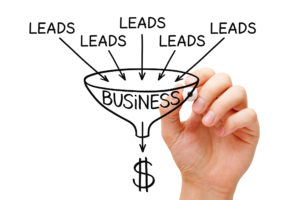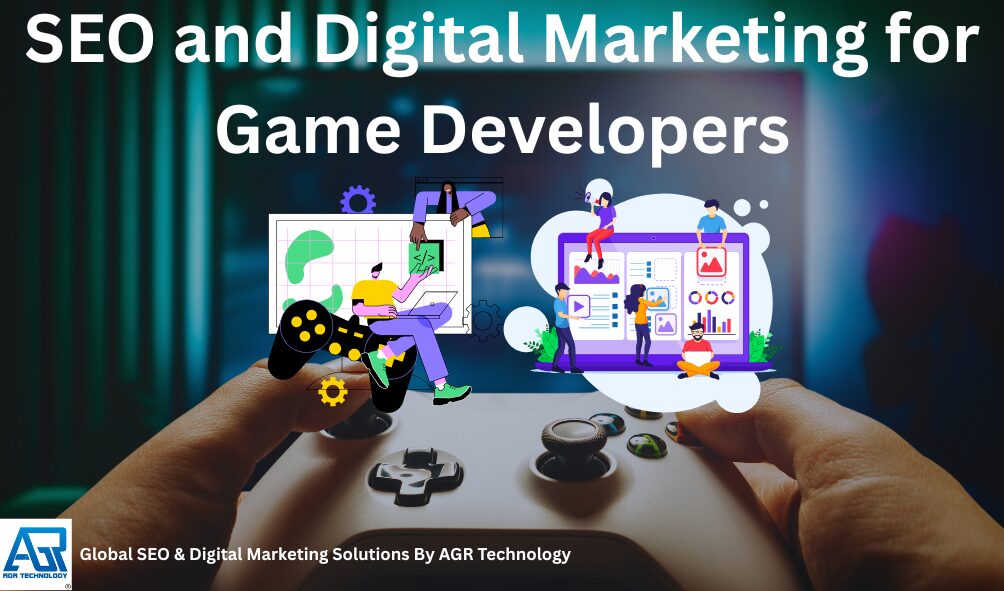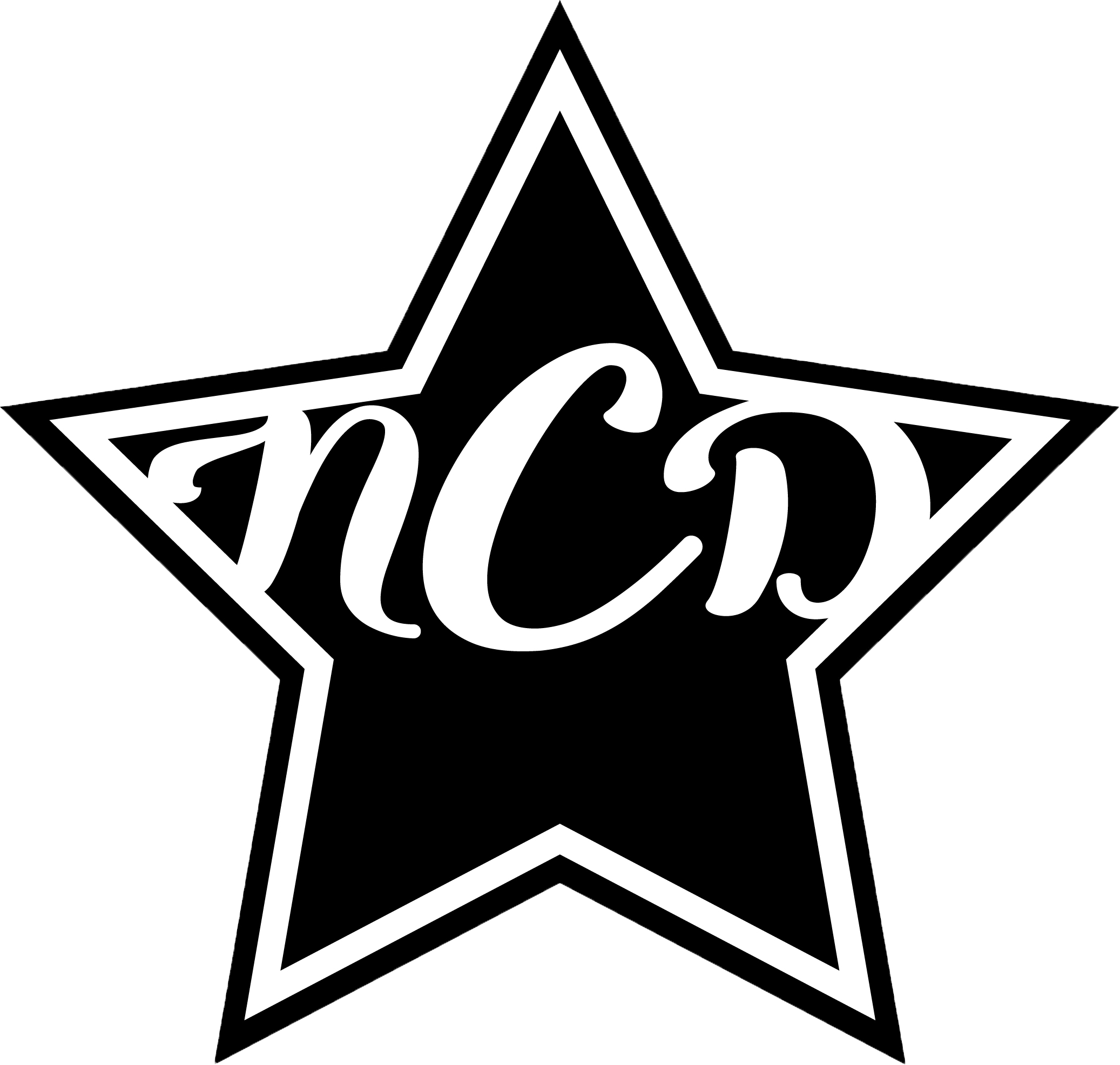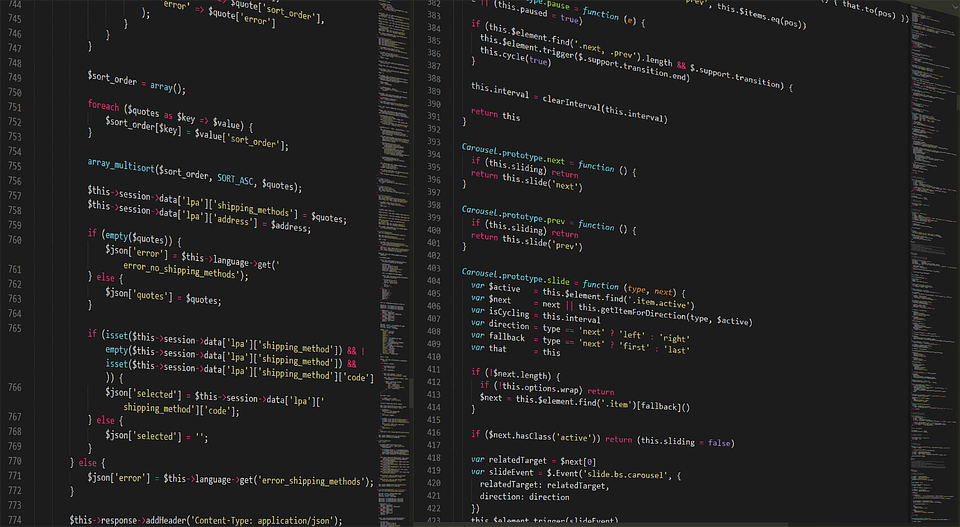You’ve poured months, maybe years, into creating your game. The mechanics work beautifully, the graphics shine, and the story resonates. But when you launch, the response is… crickets. Sound familiar?
Here’s the hard truth: even the most brilliant game won’t find an audience without a solid marketing strategy. In an industry where over dozens of new titles launch on Steam alone each year, visibility isn’t optional, it’s essential.
That’s where SEO and digital marketing come in. At AGR Technology, we’ve seen firsthand how the right approach transforms indie studios and established developers alike, helping them cut through the noise and connect with players who’ll actually love what they’ve built. Whether you’re launching your first mobile game or your tenth PC title, understanding how to optimize for search engines and reach your target audience can mean the difference between obscurity and success.
This guide walks through the strategies that actually work, from technical SEO foundations to community-driven marketing channels, so you can get your game in front of the people who matter most.
Book a free consultation call with AGR Technology to see how we can help scale your brand with proven online marketing strategies
Reviews from some of our happy customers:
Supporting businesses of all sizes to get ahead with digital solutions






Why work with us?
Why SEO and Digital Marketing Matter for Game Developers

Most game developers focus exclusively on the development side, and fair enough, that’s where the magic happens. But here’s what we’ve learned working with studios across Australia and beyond: a great game without a marketing strategy is like throwing a party and forgetting to send invitations.
The gaming market is saturated. Players have endless options, and platform algorithms favour titles that already have momentum. If you’re not actively working to increase your visibility, you’re relying entirely on luck.
SEO gives your game a fighting chance to appear when potential players search for terms like “best indie puzzle games 2025” or “multiplayer survival games.” Digital marketing builds awareness before and after launch, creating a community that’s invested in your success.
But there’s more to it than just getting eyeballs. Strategic marketing helps you:
- Reach the right players: Not everyone is your audience. SEO and targeted campaigns ensure you’re connecting with people who’ll actually enjoy your game.
- Build pre-launch momentum: Wishlists, email signups, and social followers create a launchpad for release day.
- Sustain long-term growth: Post-launch visibility keeps new players discovering your game months or even years later.
- Maximize your budget: Organic search and community-driven content offer better ROI than paid ads alone.
At AGR Technology, we can work with game developers to craft marketing strategies that align with development timelines and budgets. Because launching a game without marketing support is like building a bridge to nowhere, beautiful work that no one ever uses.
Understanding Your Gaming Audience and Market

Before you write a single meta description or launch a social campaign, you need to know who you’re talking to. And we don’t mean vague demographics like “gamers aged 18-35.” You need specifics.
Start by defining your core player persona:
- What platforms do they use? (PC, mobile, console, VR)
- What genres do they gravitate toward?
- Where do they discover new games? (YouTube, Twitch, Reddit, Discord, Steam recommendations)
- What problems does your game solve for them? (Stress relief, social connection, challenge, storytelling)
Once you’ve mapped this out, dig into the competitive landscape. Identify games similar to yours and study their marketing approach. What keywords are they ranking for? How do they engage their community? What’s working, and what’s falling flat?
Tools like Steam Spy, Google Trends, and social listening platforms reveal what players are searching for and discussing. For example, if you’re developing a roguelike deckbuilder, you’ll want to see what terms are trending in that niche and how saturated the market is.
Don’t skip this step. We’ve seen developers pour money into campaigns targeting the wrong audience, then wonder why conversions are dismal. Understanding your market isn’t just marketing 101, it’s the foundation everything else is built on.
Essential SEO Strategies for Game Visibility

SEO isn’t some mystical dark art, it’s about making sure search engines (and players) can find and understand your game. Here’s how to nail it.
Keyword Research for Gaming Content
You’re not competing with every game on the internet, you’re competing for specific search queries. The trick is finding keywords with decent search volume but manageable competition.
Start with broad terms (“puzzle game,” “MMORPG”) and narrow down to long-tail keywords (“cozy farming game like Stardew Valley,” “best free-to-play battle royale 2025”). Tools like Ahrefs, SEMrush, or even Google’s Keyword Planner give you the data you need.
Don’t just optimize for your game’s title, think about what players are actually searching for:
- “Games like [competitor title]”
- “How to [solve specific game challenge]”
- “Best [genre] games for [platform]”
- “[Your game] tips and tricks”
These informational and comparison keywords drive traffic that converts into players.
On-Page and Technical SEO Optimization
Your game’s website needs to load fast, look good on mobile, and be easy for search engines to crawl. That means:
- Optimized page titles and meta descriptions: Include your primary keyword naturally. Make it compelling enough that people want to click.
- Header tags (H1, H2, H3): Structure your content logically. Search engines use these to understand your page hierarchy.
- Image optimization: Compress images without losing quality. Use descriptive alt text (e.g., “fantasy RPG character battling dragon in forest”).
- Fast load times: A slow site kills both SEO and user experience. Aim for under three seconds.
- Mobile responsiveness: Most players will discover your game on their phones first.
Technical SEO might sound dry, but it’s the backbone of visibility. If Google can’t crawl your site properly, you won’t rank, no matter how good your content is.
Building Quality Backlinks in the Gaming Industry
Backlinks are votes of confidence from other websites. The more high-quality sites linking to yours, the more authority you build in search engines’ eyes.
For game developers, backlinks come from:
- Press coverage: Get featured on gaming blogs, news sites, and industry publications.
- Community forums: Engage genuinely on Reddit, Discord, and niche gaming forums (but don’t spam).
- Influencer mentions: When a YouTuber or streamer covers your game and links to it, that’s gold.
- Partnerships and collaborations: Co-marketing with other developers or platforms can earn you valuable links.
- Guest posts and expert commentary: Offer insights on industry trends in exchange for a backlink.
Digital Marketing Channels That Work for Game Developers

SEO lays the groundwork, but digital marketing channels bring the energy. Here’s where you meet players where they already are.
Social Media and Community Building
Social media isn’t just about posting updates, it’s about building a community that cares. Platforms like Twitter (X), TikTok, Instagram, and Discord are where gaming culture thrives.
Twitter/X: Share development updates, behind-the-scenes content, and engage with other developers and players. Use hashtags like #IndieGameDev, #GameDev, and genre-specific tags.
TikTok: Short-form video is massive for game discovery. Show gameplay clips, funny bugs, character design processes, or “satisfying” moments from your game.
Discord: Build a server where your community can hang out, give feedback, and feel like insiders. This is where superfans are born.
Instagram: Visual storytelling works well here, character art, environment design, and polished trailers get traction.
Post consistently, but don’t just broadcast, listen and respond. Community building is a two-way street.
Content Marketing and Video Trailers
Content marketing means creating valuable, engaging material that pulls people into your world. That includes:
- Development blogs: Share your journey, challenges, and wins. Players love seeing the human side of game creation.
- Gameplay videos: Post clips on YouTube, TikTok, and your website. Optimize video titles and descriptions with relevant keywords.
- Trailers: Your launch trailer is your elevator pitch. Make it punchy, exciting, and clear about what the game offers.
- Tutorials and guides: Create content that helps players get better at your game, or even games in your genre. This drives organic traffic and positions you as an authority.
Video is king in gaming. Platforms like YouTube and Twitch are where players go to evaluate whether a game is worth their time. Make sure your content is discoverable and compelling.
Influencer Partnerships and User-Generated Content
Influencer marketing in gaming isn’t just for AAA studios. Micro-influencers (streamers and YouTubers with 5k–50k followers) often have highly engaged audiences and are more affordable, or even willing to cover your game for free if it fits their niche.
Reach out with a personalized message, offer them a free key, and let them play authentically. Don’t script their coverage, audiences can smell inauthenticity a mile away.
User-generated content (UGC) is equally powerful. Encourage players to share clips, fan art, and memes. Feature the best content on your channels. This creates a feedback loop where players feel seen and others want to join in.
At AGR Technology, we can connect game developers with the right influencers and help structure campaigns that feel organic, not forced, because that’s what actually drives conversions.
Creating an Effective Game Development Website
Your website is your home base. It’s where press, influencers, and potential players go to learn more about your game, and where search engines look to understand what you’re offering.
A strong game development website should include:
- Clear value proposition: What’s the game about? Why should someone care? Answer this within seconds of landing on the homepage.
- High-quality visuals: Screenshots, GIFs, and videos that showcase gameplay and art style.
- Press kit: Make it easy for journalists and content creators to cover your game. Include logos, screenshots, trailers, fact sheets, and contact info.
- Call-to-action: Whether it’s “Wishlist on Steam,” “Join our Discord,” or “Sign up for beta access,” guide visitors toward the next step.
- Blog or news section: Regularly updated content improves SEO and keeps your community engaged.
- Contact and support info: Make it easy for players and partners to reach you.
From a technical standpoint, your site should be fast, mobile-friendly, and built with clean code. If you’re using a CMS like WordPress, choose a lightweight theme and optimize images.
Don’t overthink design, clean and functional beats flashy and slow every time.
Measuring Success: Analytics and Key Performance Indicators
You can’t improve what you don’t measure. Tracking the right metrics tells you what’s working, what’s not, and where to focus your energy.
Key performance indicators (KPIs) for game marketing include:
- Organic search traffic: How many visitors are finding your site through search engines? Which keywords are driving them?
- Wishlist conversions: On Steam, wishlist-to-purchase conversion rates typically sit around 10–20%. Track this closely.
- Social engagement: Likes and shares are nice, but comments, saves, and click-throughs matter more.
- Community growth: Discord members, email subscribers, subreddit followers, these are your superfans.
- Bounce rate and time on site: Are visitors sticking around or leaving immediately? High bounce rates signal a disconnect.
- Backlinks and domain authority: Monitor how your link profile grows over time.
- Video views and watch time: Especially on YouTube and TikTok, views are vanity, watch time is sanity.
Tools to use:
- Google Analytics: For website traffic, user behavior, and conversions.
- Google Search Console: For keyword rankings, indexing issues, and click-through rates.
- Steam’s analytics dashboard: For wishlists, purchases, and player demographics.
- Social media insights: Native analytics on each platform show what content resonates.
Review your data weekly during active campaigns, monthly otherwise. Look for patterns, test changes, and iterate.
At AGR Technology, we set up analytics dashboards tailored to game developers, so you can see at a glance what’s driving results and where to double down.
Common SEO and Marketing Mistakes Game Developers Should Avoid
Even smart developers make avoidable mistakes. Here are the big ones we see, and how to sidestep them.
Launching without a marketing plan: Hoping your game will go viral is not a strategy. Start building awareness at least 3–6 months before launch.
Ignoring SEO until after release: By then, it’s too late to build domain authority or rank for competitive keywords. Start optimizing early.
Keyword stuffing: Cramming keywords into every sentence makes your content unreadable and gets penalized by Google. Write naturally.
Neglecting mobile optimization: If your site doesn’t work on mobile, you’re losing a huge chunk of potential players.
Relying solely on paid ads: Ads are expensive and stop working the moment you stop paying. Organic strategies build lasting visibility.
Not engaging with your community: Players want to feel heard. Ignoring comments, feedback, and questions damages trust and kills word-of-mouth.
Overlooking technical SEO issues: Broken links, slow load times, and poor site structure tank your rankings. Audit regularly.
Copying competitors without differentiation: Study what others do, but bring your own voice and angle. Stand out, don’t blend in.
Failing to track results: If you’re not measuring, you’re guessing. Set up analytics from day one.
Avoiding these mistakes won’t guarantee success, but it dramatically improves your odds. And if you need help navigating the complexities, that’s exactly what AGR Technology is here for.
Conclusion
Creating a game is hard. Marketing it effectively? That’s a different beast entirely. But here’s the good news: you don’t have to figure it all out alone.
SEO and digital marketing aren’t just nice-to-haves, they’re the bridge between your game and the players who’ll love it. From keyword research and technical optimization to community building and influencer partnerships, every piece plays a role in getting your game the visibility it deserves.
At AGR Technology, we work with game developers to build marketing strategies that fit your goals, timeline, and budget. Whether you’re an indie studio launching your first title or an established developer looking to scale, we’ve got the expertise to help you succeed.
Book a free consultation call with AGR Technology to see how we can help scale your brand with proven online marketing strategies
Frequently Asked Questions
Why is SEO important for game developers?
SEO helps game developers increase visibility in a saturated market where dozens of new titles launch on Steam yearly. It ensures your game appears when players search for relevant terms, builds pre-launch momentum, and sustains long-term growth by connecting you with players who’ll actually enjoy your game.
What are the best digital marketing channels for promoting indie games?
The most effective channels include social media platforms like Twitter, TikTok, and Discord for community building, YouTube and Twitch for gameplay videos and influencer partnerships, and content marketing through development blogs and tutorials. Combining organic SEO with these channels typically delivers better ROI than paid ads alone.
When should game developers start their SEO and marketing efforts?
Game developers should begin SEO and marketing efforts at least 3 to 6 months before launch. Starting early allows time to build domain authority, rank for competitive keywords, create community momentum through wishlists and email signups, and establish relationships with influencers and press.
How do I find the right keywords for my game marketing?
Focus on long-tail keywords like ‘games like [competitor title]’ or ‘best [genre] games for [platform]’ rather than just broad terms. Use tools like Ahrefs, SEMrush, or Google Keyword Planner to find keywords with decent search volume and manageable competition that match player search intent.
What is a good wishlist-to-purchase conversion rate on Steam?
A typical wishlist-to-purchase conversion rate on Steam sits around 10 to 20 percent. Tracking this metric closely helps game developers measure pre-launch marketing effectiveness and forecast potential launch day revenue based on accumulated wishlists.
How can game developers get backlinks to improve SEO?
Game developers can earn quality backlinks through press coverage on gaming blogs and news sites, genuine engagement in community forums like Reddit, influencer mentions when streamers cover your game, partnerships with other developers, and guest posts offering industry expertise. Avoid buying links, as Google penalizes such schemes.
Related content:
Facebook / Meta Ads Management Services
Google Ads Management Services

Alessio Rigoli is the founder of AGR Technology and got his start working in the IT space originally in Education and then in the private sector helping businesses in various industries. Alessio maintains the blog and is interested in a number of different topics emerging and current such as Digital marketing, Software development, Cryptocurrency/Blockchain, Cyber security, Linux and more.
Alessio Rigoli, AGR Technology
![logo-new-23[1] logo-new-23[1]](https://agrtech.com.au/wp-content/uploads/elementor/thumbs/logo-new-231-qad2sqbr9f0wlvza81xod18hkirbk9apc0elfhpco4.png)













